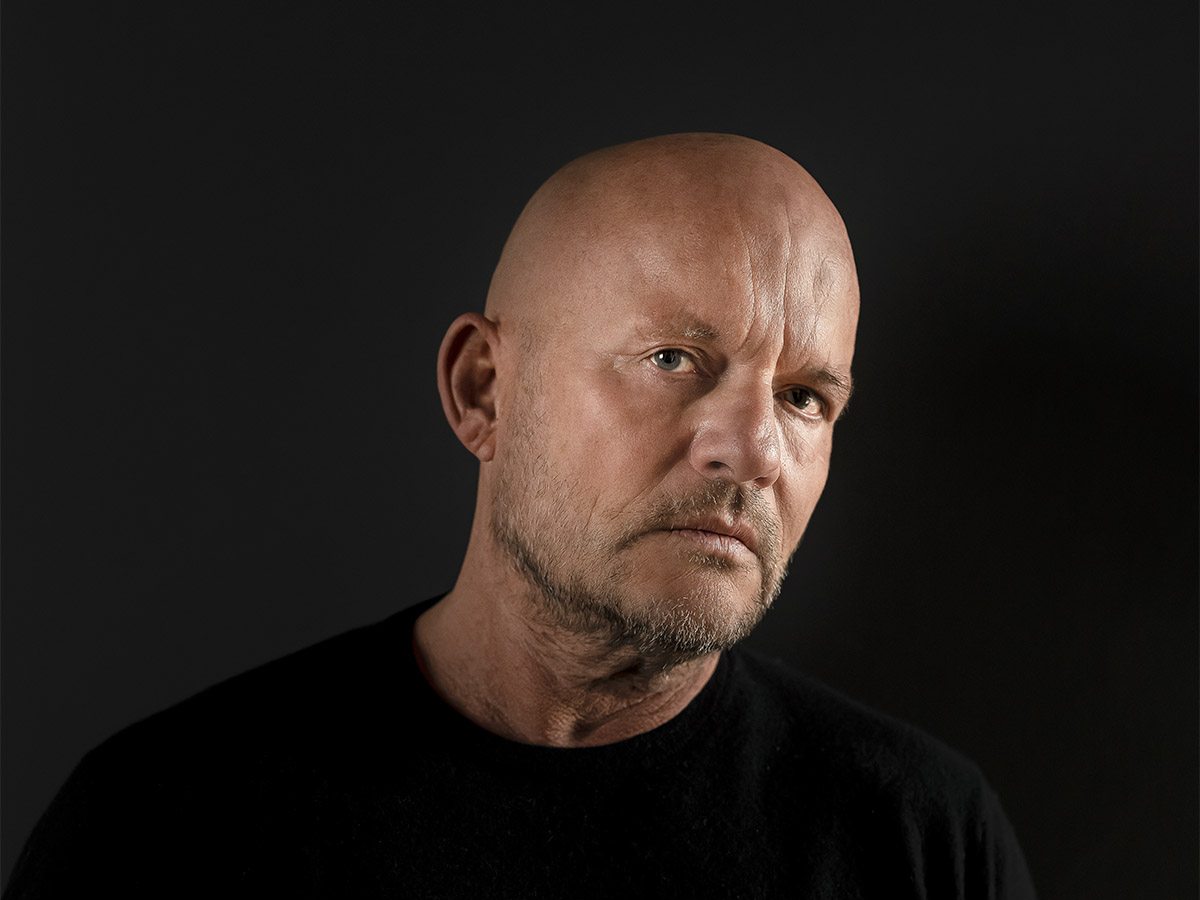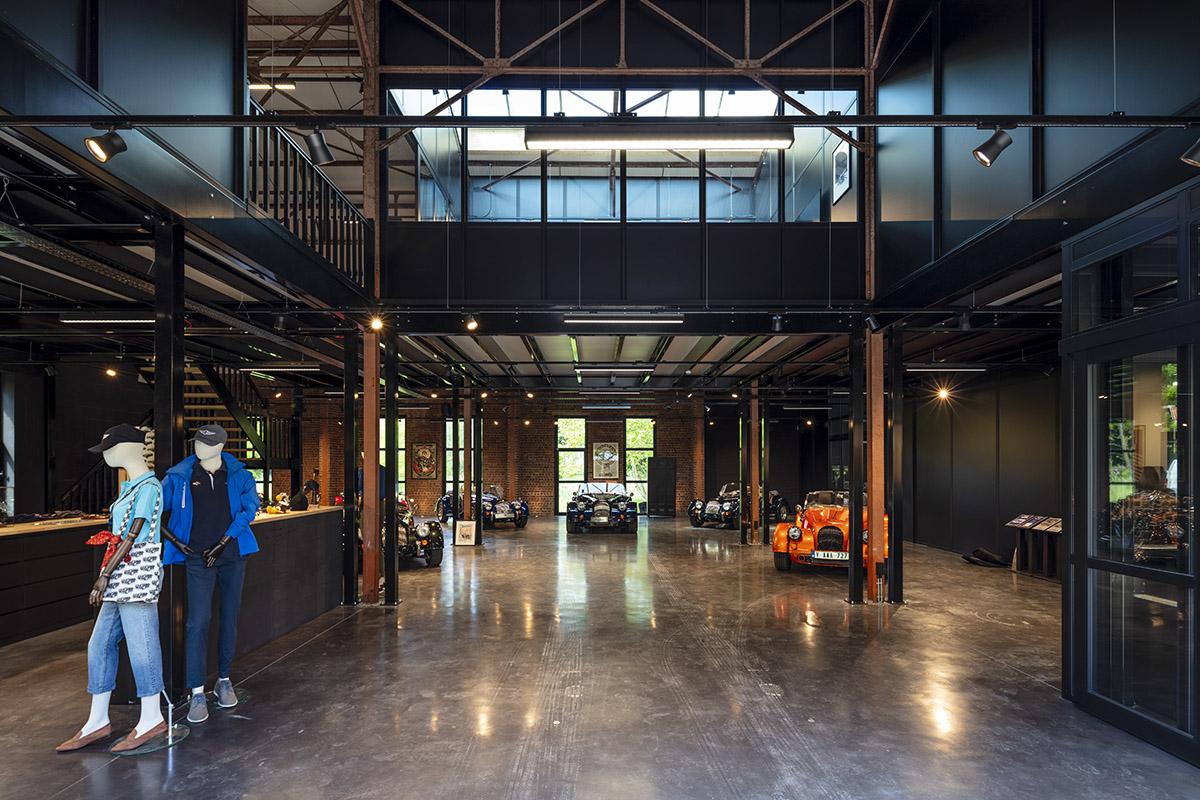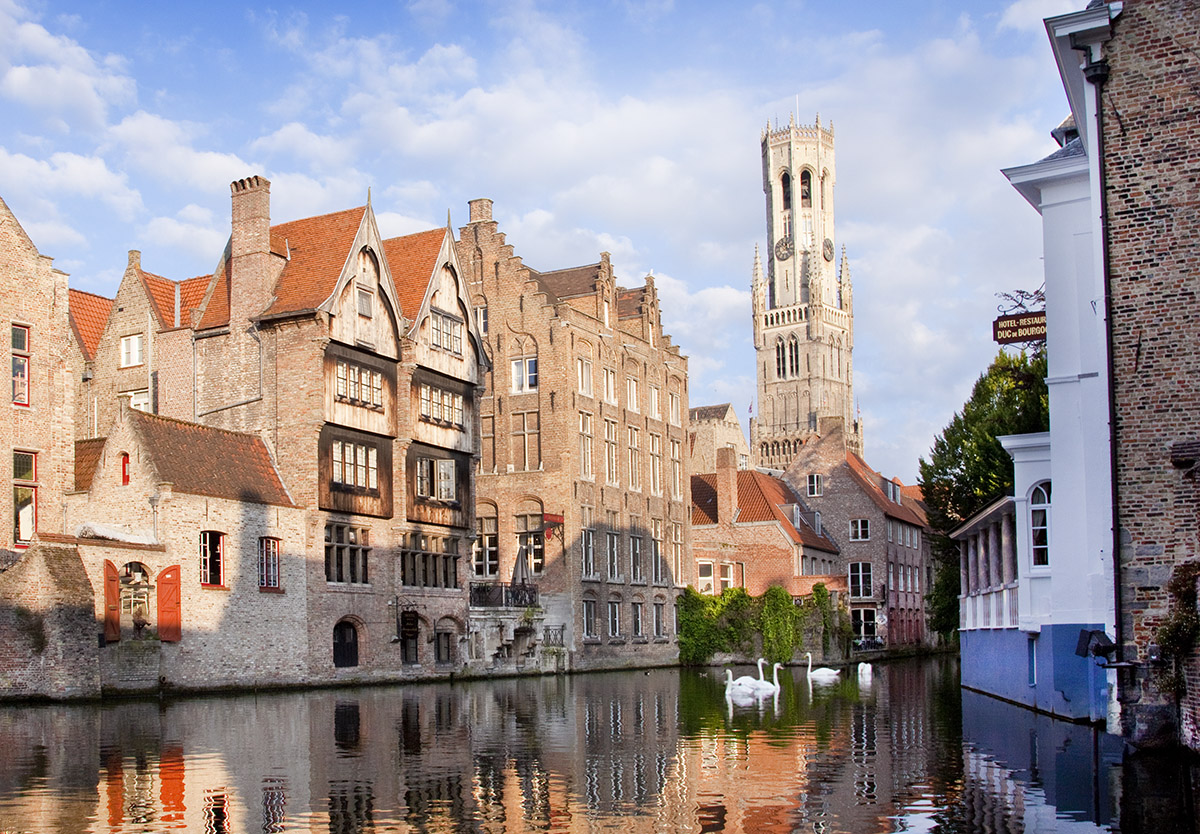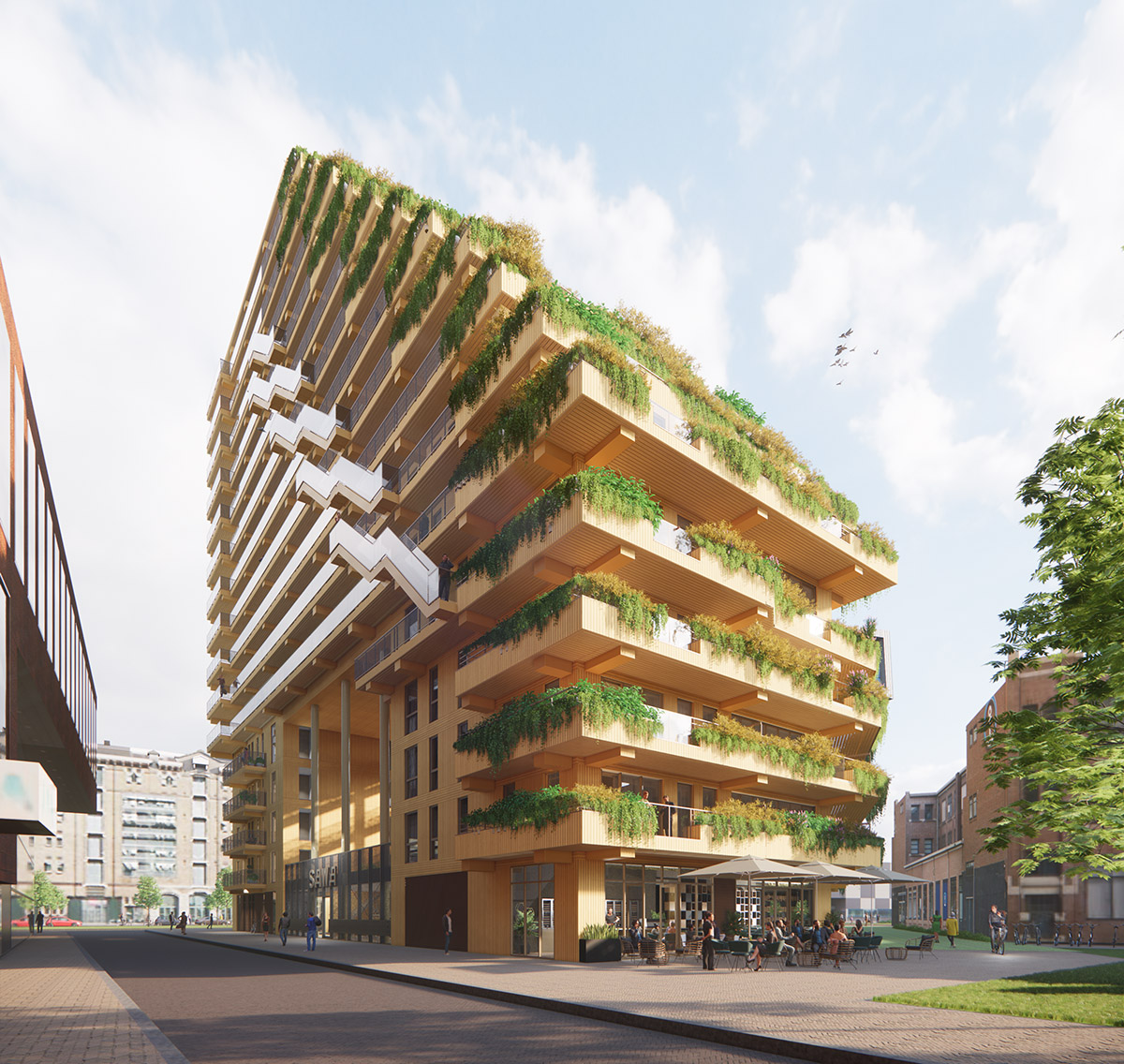Wastiau & Co Architectenbureau
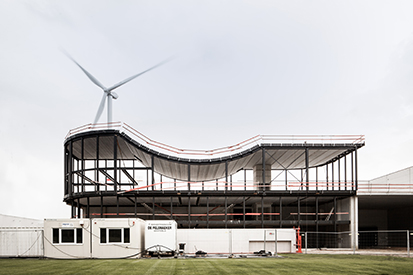
Building a beautiful box
TEXT: EVA MENGER | PHOTOS © JEROEN VERRECHT
Wastiau & Co is a family business in the best sense of the word. When starting the firm back in the 1980s, Guy Wastiau mostly worked on factory design in Belgium and France – a course that slowly changed with the turn of the millennium. In 2008, his daughter Marie and her partner Allen Zimmerman joined the practice, bringing with them their design-orientated start-up Wil-Ma. The industrial focus remained, but with more attention to contemporary aesthetics and architectural branding.
“Industrial buildings are often little more than gigantic metal boxes, typically positioned along the highway and easily visible,” says Allen Zimmerman. “But more than just a box, industrial architecture can play an important role in company branding. If a factory or distribution centre stands out from the crowd, the brand stands out as well. We specialise in giving more thought to industrial architecture, and this approach to design is about more than just aesthetics. A well-thought-out masterplan and prefabricated structure are equally important.”
Wanting to join the architectural expertise of the firm with a more conceptual approach, Marie and her partner, Allen Zimmerman, started Wil-Ma, a design collaboration focusing on the conceptual side of industrial architecture and site planning. “We wanted to develop a youthful and dynamic counterpart to the years of experience already present within Wastiau,” Marie Wastiau explains. “We like to see Wil-Ma as a think tank; a place where we explore new concepts and materials. Ideas which will then be executed by architects at Wastiau & Co – there is a constant interaction between the two.”
Marie Wastiau: “We started Wil-Ma because we felt a strong need to efficiently develop new ideas. Industrial architectural design can easily fall into repetition, which means that no real developments take place unless the conceptual solution itself is fresh.” Working with an international team of architects, the American-Belgian duo of Wil-Ma strives for innovative and imaginative design. The know-how and experience of Wastiau keeps us grounded.”
Together, Wastiau & Co and Wil-Ma work on a range of projects, with scales ranging from extra large to extra small. Zimmerman: “We’ve recently finished up construction on a factory with offices for Schoeller Allibert, a manufacturer of reusable plastic pallets and crates, and Blue Oceans XL, an investor in start-ups and innovations. They were looking for a unique building that united art and functionality, which we responded to by being inspired by the plasticity of polyethylene during the production process. Referencing the key characteristics of each company, we built our design around plasticity and movement, resulting in a building dominated by curvilinear shapes.”
Another design visibly inspired by the client’s product is the HQ and warehouse of Energetic Lighting Europe (Yankon Lighting) in Kontich, Belgium. Serving as the Chinese LED manufacturer’s logistic hub for European activities, the building’s interesting composition is brought to life by a mixture of both white and transparent shades and intensities. “The whiteness of the concrete, glass and aluminium contrasts poetically with the colours of the surrounding landscape, referencing the soft white glow of LED lighting,” Zimmerman explains.
For each project Wastiau & Co and Wil-Ma take on, integrating the client’s values with the environment of the building is key. “For the new T-Port Logistic Campus in Twente, the Netherlands, we really wanted the environment’s rich history to play a role in our design,” Wastiau tells us. “Twente knows a long history of sheep farming and weaving, which we wanted to refer to by including weaving patterns – made out of industrial materials – on the building’s facades. In doing so, we play subtly on the connection between the environment’s rich history and the future of the fashion industry, in which e-commerce, and T-Port Logistics, plays an increasingly large part.”
All projects have a strong industrial link, which will continue to be the case in the future. “Our goal is to stay true to what we’ve always done, but we’d like to expand that vision by paying more attention to sustainability, liveable work environments and urban-inspired masterplans for industrial sites,” says Wastiau. “The industrial world is changing, and it is our job to reflect on those changes with every step we take.”
Subscribe to Our Newsletter
Receive our monthly newsletter by email
